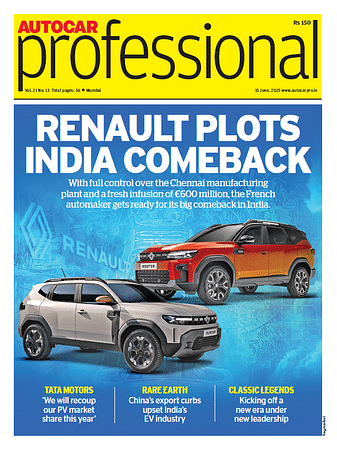CPT & AVL collaborate on advanced direct injection
The AVL demonstrator vehicle incorporates an advanced 2-litre 4-cylinder engine with gasoline direct injection (GDI), double cam phasing and single-scroll, waste-gated turbocharger to deliver high power and torque outputs of 197bhp and 40.7kgm respectively. A system of cooled, external exhaust gas recirculation (EGR), Lambda =1 operation at all engine loads up to 4000rpm and advanced thermal management further enhance the CO2 reduction potential of the powertrain.
The philosophy of ‘down-speeding’ is fully employed through the fitment of gear ratios more normally associated with turbocharged diesel engines.
Successful down-speeding relies heavily on the immediate availability of high torque levels at very low engine speeds in response to driver inputs. The integration of CPT’s variable torque enhancement system or VTES supercharger technology virtually eliminates all perceptible turbo-lag even in the absence of variable geometry turbine technology normally fitted to turbocharged diesel engines.
Through careful integration of the above technologies and the implementation of engine stop-start and smart alternator control, AVL is able to demonstrate CO2 emissions of just 159g/km for a Volkswagen Passat demonstration vehicle at 1,590kg vehicle mass, which also meets Euro 5 emission standards. By way of comparison, a series production Passat emits 165g/km when fitted with a 2.0l TDI (167bhp) diesel engine and 194g/km when fitted with a 2.0l TFSI (197bhp) petrol engine.
At the same time the 197bhp engine delivers high levels of performance and refinement while VTES ensures outstanding transient response even at the lowest engine speeds, equivalent to a naturally aspirated engine of twice the capacity.
“Getting a petrol engine to deliver the lower CO2 emissions of a diesel engine is something of a holy grail for the motor industry,” says Nick Pascoe, chief executive officer, CPT. “The challenge is to retain the driveability at low engine speeds in order that drivers can fully realise the benefits of down-speeding. An electric supercharger can react instantly to these transient load conditions, delivering up to 25kW of additional power at the crankshaft in less than a second.”
RELATED ARTICLES
Belrise Industries: A Story of Grit and Focus
The Belrise Industries IPO is the culmination of a multi-decade journey by entrepreneur Shrikant Badve that started in a...
Mahindra and Lightweighting: Solid Steel To Nimble Aluminum
Stricter emission regulations and rising fuel efficiency targets are driving a fundamental transformation in powertrain ...
Hero vs Honda: In Numbers
A Comparative Study of Honda Motorcycle & Scooter India and Hero MotoCorp.





 By Autocar Pro News Desk
By Autocar Pro News Desk
 18 May 2009
18 May 2009
 3306 Views
3306 Views





 Shahkar Abidi
Shahkar Abidi



 Autocar Professional Bureau
Autocar Professional Bureau

